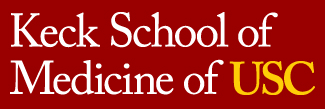What are the new ways that public health agencies are interfacing with the public to raise both general and emergency health awareness?
#1 Social Media Circus
Online networking has made some drastic changes to both personal and community health endeavors, mainly by enabling large numbers of people to quickly share data. This has made preventive and diagnostic information more broadly accessible by allowing public health agencies to utilize social media for dispersing time-sensitive information, encouraging behavioral changes during health crises, being a stage for discussion between agencies and constituents (as opposed to simply a data supplier), and enabling the general public to offer valuable metrics and feedback.However, social media also allows non-experts to circulate misinformation almost instantaneously without contribution or corroboration from health professionals or agencies, forcing those agencies to take on the additional task of mitigating false information during health emergencies, such as during the 2014 Ebola crisis. Consequently, it is essential for public health agencies and organizations to equip themselves with ready messages, educational material, and adequate staff or volunteers before a crisis even starts—and to develop a social media management strategy to combat misinformation and dispel unhelpful rumors.
#2 Faster Emergency Management
Technology gives emergency responders the information they need in order to make the best decisions as quickly as possible, and drastically reduces the amount of time it takes to receive, process, and impart that information. For example, emergency vehicles can now be fitted with GPS devices that signal traffic lights to stay green or red so that a fire truck won’t get stuck in traffic, saving lives and resources. Then there’s virtual interaction equipment, which allows police and first responders to share screens, content, and information and even have face-to-face conversations. Seeing and understanding exactly what a colleague sees is extremely helpful, but being able to view a person’s reaction and interpret their body language in real time is even more beneficial.
#3 Population Science for Treating Epidemics
Population science studies group health and the spread of communicable diseases. In the past, this field of study was only delved into by public health workers during outbreaks. Now, new technology in the form of geospatial mapping has revolutionized the medical field using advanced, up-to-the-minute population science. By evaluating patients on a large scale, doctors can gather information on the life cycle, mortality rate, and frequency of a disease throughout the entire healthcare system, and use that information to treat illnesses on an individual basis. However, through considering the entire populace, population science allows physicians to determine a way to cure these epidemics, instead of just treating an individual—research methods that can now be used in clinical studies and may improve the evaluation of medical procedures.
#4 3-D Bioprinting
A team from Wake Forest School of Medicine in North Carolina, led by Dr. Anthony Atala, has developed something they call ITOP, or Integrated Tissue and Organ Printing System. ITOP uses a two-part “bio-ink” combination that deposits biodegradable, plastic-like material to simulate tissue shape and water-based gels that contain the pertinent cells to required tissue. This process also creates a network of tiny channels that carries oxygen and nutrients to the printed tissue after implantation, reducing the likelihood of tissue die-off.Both of these are revolutionary advancements, making 3-D bioprinting truly plausible.
Five months after implantation in rats and mice, the bone tissue resembled normal bone, including new blood vessels and no dead tissue.
Resources:
http://www.huffingtonpost.com/shannon-dosemagen-/how-social-media-is-shaki_b_9090102.html
http://www.phi.org/focus-areas/?focus_area=technology-innovation
http://www.huffingtonpost.com/drew-hendricks/how-technology-is-changin_b_3273542.html
http://cbs4indy.com/2015/06/06/technology-to-increase-emergency-response-times-coming-to-greenwood/

